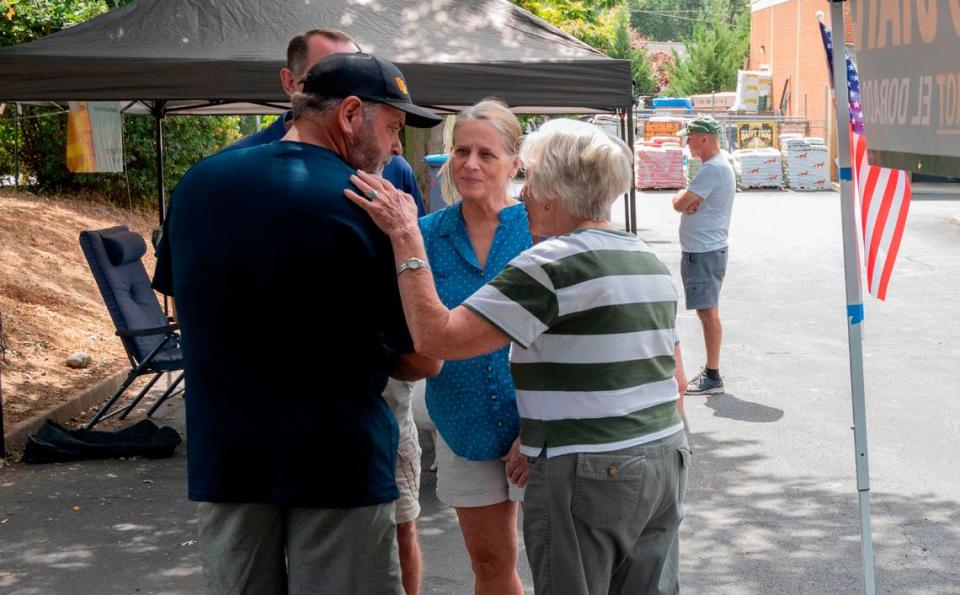The latest effort to secede from California is happening in Sacramento’s backyard
Sharon Durst stood with a small but interested group gathered in the Ace Hardware parking lot on Pleasant Valley Road last month beneath a blue tent, passing out copies of the U.S. Constitution and bumper stickers that read: “Republic for El Dorado State: from Gold to Glory.”
Durst, a lifelong county resident, said her campaign for El Dorado’s statehood is beginning to pick up steam. Secession is certainly a long shot, but there is a larger principle at stake.
“Geography establishes culture,” she said.
It’s El Dorado County’s geography — rolling hills, sprawling national forest, lakes, reservoirs, and dirt trails dotted with bright, smooth manzanita — that sets it apart from other counties in state. It gives residents like Durst a sense of belonging and identity separate from its big city neighbor and subdivision suburbs to the west.
It’s why Durst, along with former county supervisor Ray Nutting and volunteer Jim Allen, were out collecting responses to a single survey question for residents from El Dorado Hills to South Lake Tahoe: Should the county leave California and form its own state?
“What I can say is that California has the worst (system of) representation of any state,” Durst said. “It has the highest population of any state, and yet it only has 80 in the Assembly and 40 in the Senate.”
Like many other parts of the U.S., this leads to less representation in rural, sparsely populated areas that are geographically large. The geography, Durst said, needs representation, too.
“We don’t like the laws that are passed for us as rural residents,” she said. “Laws that are passed by people who are urban residents. We recognize they have their own concerns, but they’re not applicable to us. So what we want is a very limited government.”
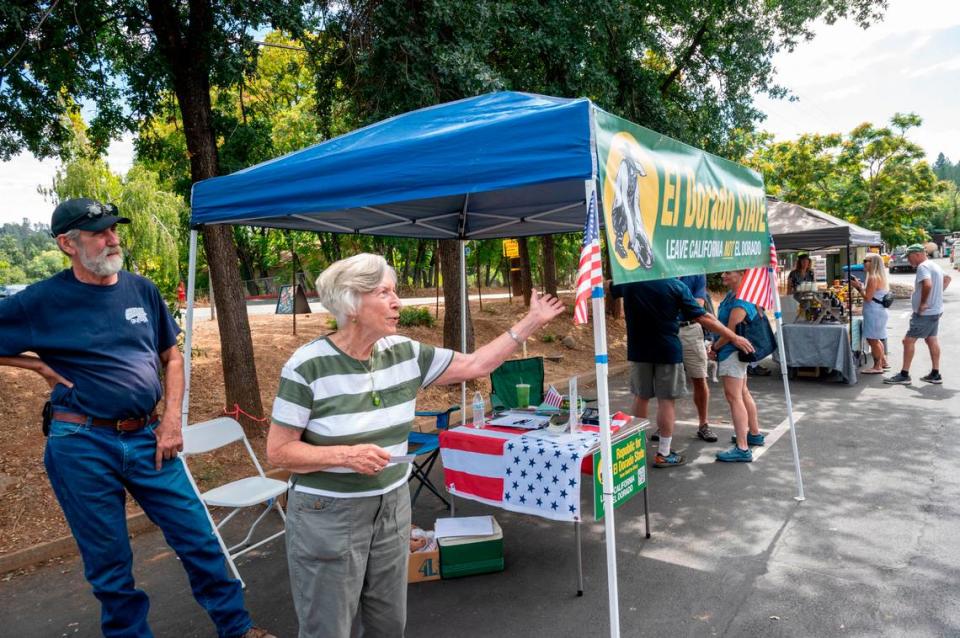
The county with a population of 191,185 — mostly white, mostly Republican and No Party Preference voters — is part of California’s long history of secessionist sentiment.
There have been more than 200 efforts to exit, and more than 200 times, the movements have come to naught.
Breaking up is not only hard to do, it’s virtually impossible. Secession requires approval by the state legislature, followed by Congress. Because most secession movements in California are led predominantly by conservative or libertarian organizers, they go nowhere with California’s Democratic supermajority.
Yet the separatist impulse is not without meaning. It represents the widening schism, not just between political parties but two profound cultural identities: the rugged individualism of the rural, and the inclusive urbanism of the major cities. Rural Californians up and down the Golden State feel unrepresented by elected officials from coastal enclaves like Los Angeles and the Bay Area, and what they see as the elite politicos and lobbyists in the state capitol.
Rural conservatives feel increasingly far away, geographically and ideologically, from their liberal neighbors. Even rural Democrats feel this disconnect. The pursuit of an El Dorado State is simply the next chapter in the movement that this sense of distance and isolation has spurred.
‘Leave California, Not El Dorado’
“We need a representative who lives here,” Durst said.
Not a single representative of El Dorado County, beyond its Board of Supervisors, actually lives there or has any meaningful connection to it.
The county is represented in the State Assembly by two Republicans: Joe Patterson, who lives in the Placer County suburb of Rocklin, and represents El Dorado Hills, Cameron Park, and Placerville. Megan Dahle, who represents the easternmost part of El Dorado, from Placerville to South Lake Tahoe, lives in Lassen County. State Sen. Marie Alvarado-Gil, a Democrat, is in Amador County.
At the Congressional level, Rep. Tom McClintock doesn’t even live in his own District 3, let alone the portion of the county he represents, from El Dorado Hills to Placerville. Rep. Kevin Kiley, who represents the eastern slope, resides in Rocklin. El Dorado County residents certainly didn’t feel heard by the late Sen. Dianne Feinstein of San Francisco, or Sen. Alex Padilla from Los Angeles — both places painted by the right as cautionary horror stories of failed Democratic policies.
Durst capitalized on these frustrations in a 7,000-word Substack manifesto outlining her vision for the Republic for El Dorado State. Since then, she, Nutting, Allen and a handful of volunteers have traveled the county hosting information sessions, survey events, and meetings.
“Many of the residents of El Dorado County, who are not of the original native stock go back several generations in California. But they would rather be Free than labeled as Californians,” she wrote in the May post.
In the short time that she and fellow El Dorado State activists launched their movement, close to 300 people have answered “yes” to the survey about leaving the state, with plenty of engaged subscribers — she estimates about 500 — via Substack. She said that volunteers around the county report much enthusiasm from the public.
Durst is optimistic — the movement is hardly at its crawling stage, she said, let along walking or running, and hundreds of engaged supporters is a sign that there’s meaningful support behind the movement.
Getting local support is one thing, but the process for legal support will be its own challenge.
The U.S. Constitution’s New State Clause allows for new states to form with the approval of their state legislature and Congress (as was the case in West Virginia).
Durst and the committee write that their cause should go directly to the U.S. Congress. They argue that because California is in violation of federal laws related to safety, security, and representation, its state legislators have forfeited their power.
They also contend that because El Dorado formed as a county before it became part of California in 1850 — and because the federal government owns and oversees so much of its land — there’s a decent case that the county belongs under federal purview, not California’s.
Legal experts said this has no standing, but Durst and fellow organizers aren’t worried.
“California has failed to provide the Domestic Tranquility Right of Safety and Security to the People for protection from Foreign Invasion and Domestic Violence, also guaranteed in Article 4, Section 4 (of the U.S. Constitution) and has, in fact, exacerbated the lack thereof through its laws and regulations,” Durst wrote on Substack. Examples of this include crime rates, illegal immigration, and a representation system that favors population over geography.
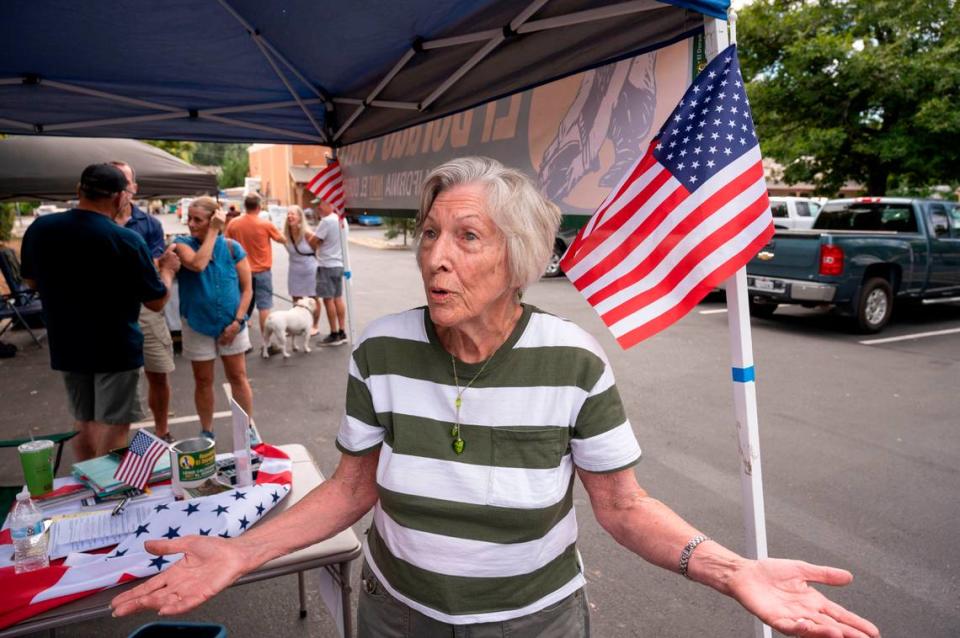
“We want to stay here” she told The Sacramento Bee. “But we want the advantages that other states have, instead of the tyranny that California gives us.”
She’s eager to move ahead to phase two, in which the group will amass “many more active participants to give us the Power of the People to commit to the hard work and study ahead to form a new government, built without adhering to the laws and regulations of California but upon the good in the county government we already have.”
San Bernardino County
El Dorado isn’t the only county thinking about this approach.
Los Angeles’ neighbor to the east encompasses the Inland Empire, where residents voted last fall to “study and advocate for all options to obtain the county’s fair share of state funding, including secession from the State of California.”
Nearly 2.2 million residents live in the county, with 1.1 million registered voters. Measure EE was approved by about 5,000 votes out of just over 420,000 votes cast.
The secession provision was added by Jeff Burum, a Rancho Cucamonga real estate developer, who wants to rename the county “Empire.”
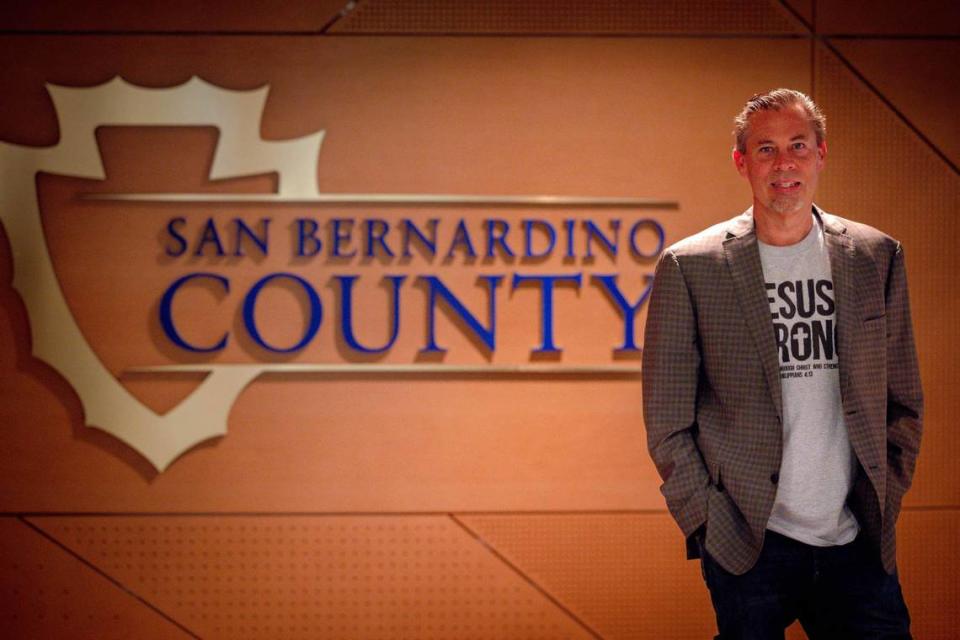
“San Bernardino County has long suffered enough,” Burum told the county’s Board of Supervisors last summer.
“The state of California continues to allocate resources to the high-cost areas to our detriment and other inland valley communities... We have been the dumping grounds of whatever you want.”
Burum acknowledged that the measure is symbolic, meant to communicate the county’s frustrations with the way the state is being run.
“We’re part of a great state that’s gone awry. It’s too big. It’s too inefficient. There’s no accountability in California in my opinion anymore.”
State of Jefferson
This movement differs from San Bernardino and El Dorado counties in three ways. First, by the enormous swath of the state it would claim. Second, by how long the effort has persisted. And third, by its connection to counties from a neighboring state.
The State of Jefferson would combine the northernmost counties of California — everything north of Mendocino, Glenn, Butte, and Plumas — and the southernmost counties of Oregon. It was formally proposed in 1941 by Gilbert Gablean, an Oregon mayor, and supported by then-state Sen. Randolph Collier of Siskiyou County. Yreka, the Siskiyou County seat, was the intended capital. The attack on Pearl Harbor, and Gable’s unexpected death, took the energy out of the movement for time.
But sentiment that the North State is underrepresented has persisted in the 82 years since Gilbert’s first proposal. In 2013, the Siskiyou County Board of Supervisors voted 4-1 in support of leaving California to form Jefferson. Several counties in California’s North State followed.
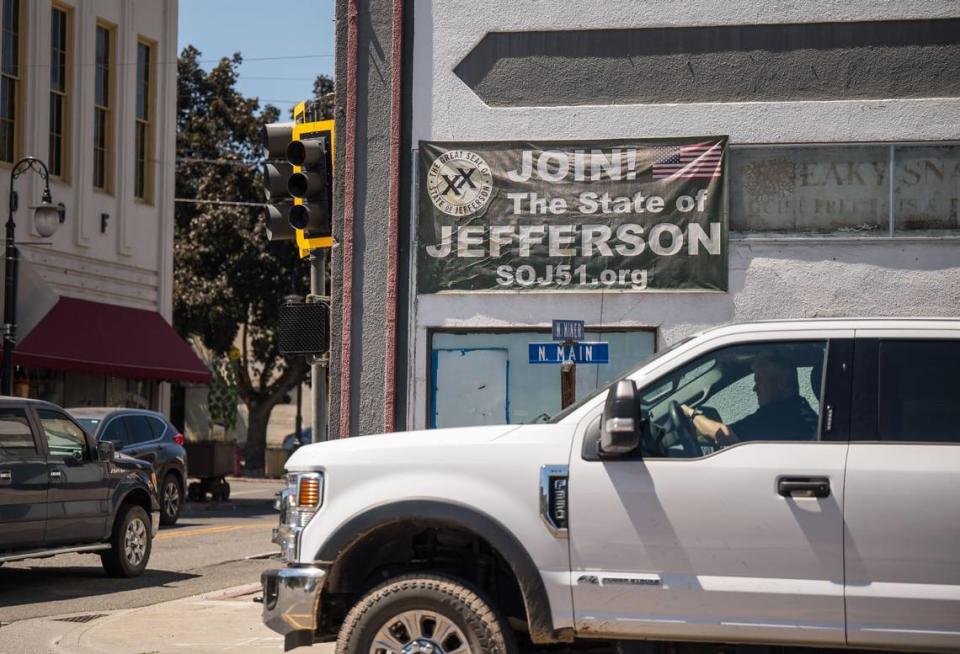
In 2017 a group of Jefferson supporters, organized under the non-profit Citizens for Fair Representation, sued then-Secretary of State Padilla, saying that California’s current model of representation, so lamented by Durst, violates the U.S. Constitution’s 14th Amendment by creating a representational imbalance. The U.S. Supreme Court dismissed the case in 2020.
The legal defeat prompted some supporters, like Durst, to start their separatist movements. But the setback has not stopped many other Jeffersonians from adopting secession as a cultural and political identity.
New California State
This is arguably the most extreme effort, one even Durst scoffs at.
New California State would exclude Los Angeles, San Francisco, other Bay Area cities and Sacramento while swallowing most of the rest of the state, a current map shows. Not a solution to the separatist complaint that California is too big.
“What (the map) will reveal are two states with populations which are near equal but based on rural vs urban populations,” organizers wrote on New California’s website. Its leader is Paul Preston, a conservative talk radio host who has spent the last nine years on project NCS, which is currently a 501(c)4. Preston once said that former Gov. Jerry Brown is “every bit a dictator as Adolf Hitler, as Joseph Stalin, as Mao Zedong.”
The CEO is Chris Street, who earlier this year was nearly appointed Shasta County CEO by its far-right Board of Supervisors — until protests from Shasta residents prompted the board to hire someone else.
Like Durst in El Dorado County, Preston supported secession via the State of Jefferson, until he grew disillusioned with its leadership and approach. (NCS plans to pursue statehood based on the U.S. Constitution’s New States Clause.) He also believes that some of the State of Jefferson organizers are infiltrating the group on behalf of the billionaire George Soros.
No separatist effort is exactly alike, but from Yreka down to San Bernardino, organizers are all unified by a shared sense of disenfranchisement — and a common enemy in a tyrannical Democrat leader.
“It is impossible to believe that the men who wrote the Declaration of Independence,” wrote Durst in El Dorado County, “would be of a mind to hold a people hostage to an oppressive State any more than an oppressive King.”
